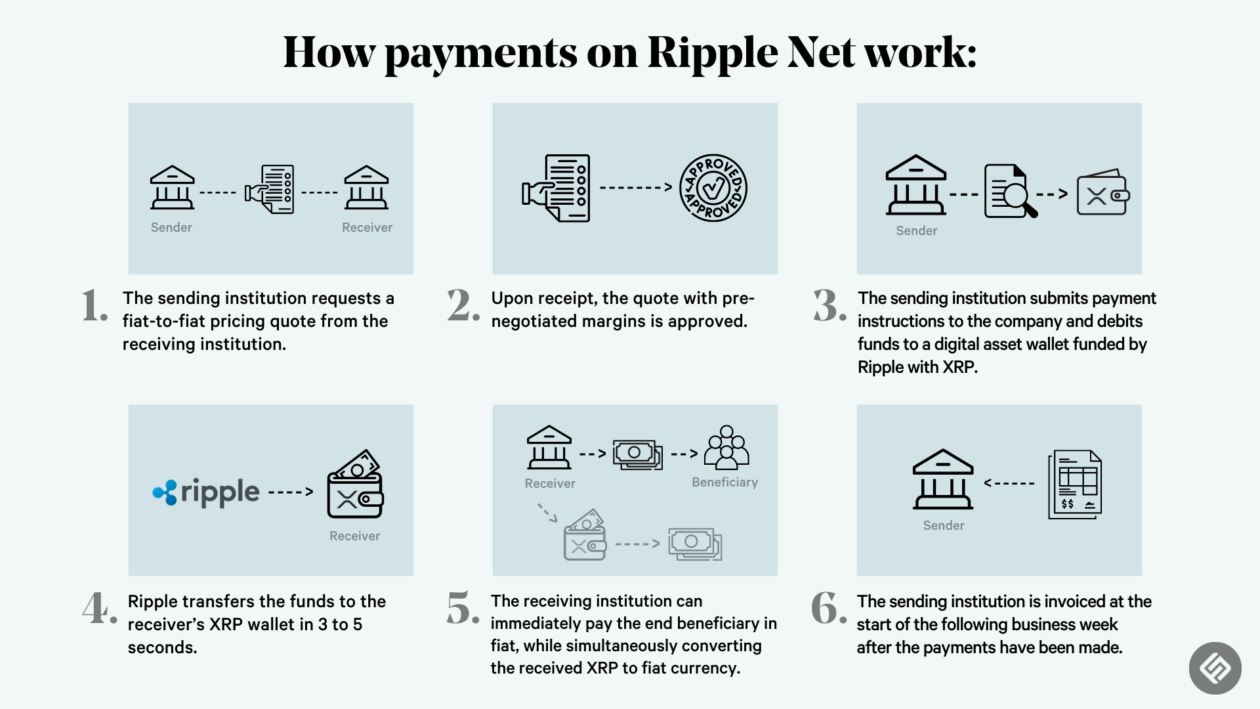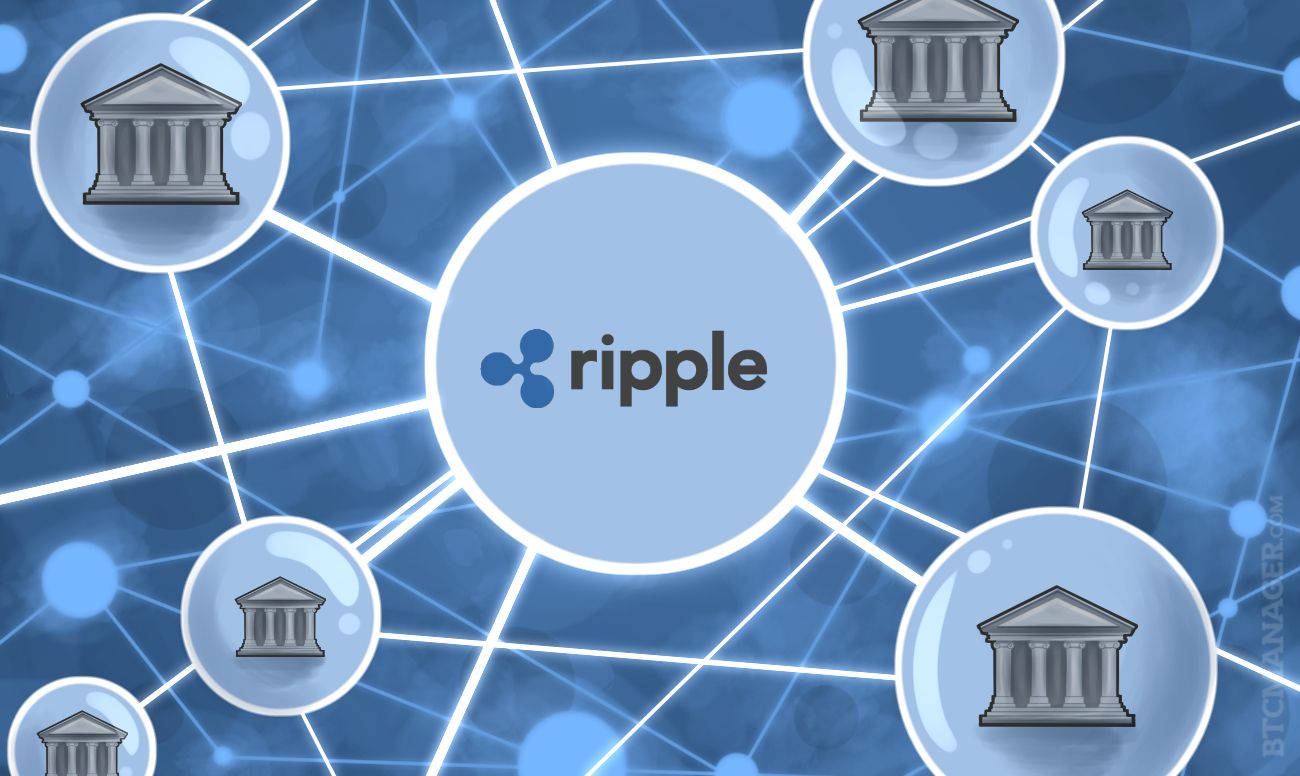XRP’s Role in the Global Financial Landscape

XRP, a cryptocurrency developed by Ripple Labs, has emerged as a significant player in the global financial landscape. While often compared to Bitcoin and Ethereum, XRP distinguishes itself through its unique design and purpose, aimed at facilitating fast and efficient cross-border payments.
Comparison with Bitcoin and Ethereum
XRP’s position within the cryptocurrency ecosystem can be better understood by comparing it with other prominent players, such as Bitcoin and Ethereum. Each cryptocurrency possesses distinct characteristics, strengths, and weaknesses that shape their respective roles in the financial landscape.
- Bitcoin: As the first and most widely recognized cryptocurrency, Bitcoin is often seen as a digital gold, valued for its scarcity and decentralized nature. It functions primarily as a store of value and a medium of exchange, with transaction speeds that can be relatively slow.
- Ethereum: Ethereum is a platform for decentralized applications (dApps) and smart contracts, enabling the creation and execution of programmable code on a blockchain. It serves as a platform for various decentralized finance (DeFi) applications and has a faster transaction speed than Bitcoin.
- XRP: XRP, unlike Bitcoin and Ethereum, was designed specifically for cross-border payments. Its transaction speed is significantly faster, with a focus on efficiency and low transaction fees. While it is not as decentralized as Bitcoin, XRP leverages a network of banks and financial institutions to facilitate payments.
Regulatory Scrutiny and Legal Challenges
The adoption and future prospects of XRP have been significantly influenced by regulatory scrutiny and legal challenges. These external factors have created uncertainty and impacted its price and market sentiment.
- SEC Lawsuit: In December 2020, the U.S. Securities and Exchange Commission (SEC) filed a lawsuit against Ripple Labs, alleging that XRP was an unregistered security. This lawsuit created significant uncertainty and legal complexities for XRP’s future.
- Regulatory Landscape: The global regulatory landscape for cryptocurrencies is still evolving, with varying degrees of clarity and enforcement. Regulatory uncertainty can hinder innovation and adoption, making it challenging for companies like Ripple to navigate the legal complexities.
Potential to Disrupt Traditional Financial Systems
Despite the challenges, XRP holds significant potential to disrupt traditional financial systems and revolutionize cross-border payments. Its key features, including speed, efficiency, and low costs, make it an attractive alternative to traditional payment methods.
- Faster Transactions: XRP’s transaction speed is significantly faster than traditional payment systems, which can take several days to process. This speed advantage is particularly beneficial for cross-border payments, where time is often a critical factor.
- Lower Transaction Costs: XRP’s transaction fees are significantly lower than traditional payment systems, which can charge high fees for international transfers. This cost advantage makes XRP a more affordable option for businesses and individuals.
- Global Reach: XRP’s network of financial institutions and banks allows for seamless cross-border payments, enabling businesses and individuals to send and receive money globally. This eliminates the need for intermediaries and reduces the risk of fraud.
Ripple XRP

Ripple XRP, a leading cryptocurrency, has emerged as a significant player in the global financial landscape. Its focus on facilitating cross-border payments and its innovative technology have garnered attention from financial institutions and investors alike. While XRP has experienced periods of volatility, its underlying technology and the Ripple ecosystem continue to evolve, paving the way for potential future growth and adoption.
Ripple XRP: The Future
Ripple’s commitment to innovation and expansion is evident in its recent developments, including new partnerships, product launches, and technological advancements. These efforts aim to enhance the Ripple ecosystem and solidify its position in the evolving world of decentralized finance.
- New Partnerships: Ripple has actively forged partnerships with financial institutions and payment providers worldwide. These partnerships expand the reach of Ripple’s network, facilitating faster and more cost-effective cross-border transactions. For instance, Ripple has partnered with MoneyGram, a global money transfer provider, to enable faster and more efficient cross-border payments. This collaboration has facilitated seamless transactions between financial institutions and individuals, showcasing the potential of Ripple’s technology in the real world.
- Product Launches: Ripple has introduced new products and services to enhance its offerings and cater to the evolving needs of its customers. RippleNet, a global network of financial institutions, enables faster and more cost-effective cross-border payments. Ripple’s On-Demand Liquidity (ODL) product utilizes XRP to facilitate real-time payments, eliminating the need for pre-funding accounts and reducing transaction costs. These innovative products demonstrate Ripple’s commitment to providing efficient and cost-effective solutions for the global financial industry.
- Technological Advancements: Ripple is continuously investing in research and development to enhance its technology and improve the efficiency and security of its platform. The company has made significant strides in developing its consensus mechanism, which ensures the integrity and security of the XRP ledger. These advancements contribute to the reliability and scalability of Ripple’s network, making it a more attractive option for financial institutions and investors.
The potential growth trajectory of XRP is influenced by factors such as the increasing adoption of blockchain technology, the growing demand for faster and more efficient cross-border payments, and the expanding global financial landscape. As the world embraces digitalization and decentralized finance, XRP is well-positioned to play a crucial role in shaping the future of financial transactions.
XRP’s Role in Shaping the Future of Decentralized Finance
XRP’s role in the future of decentralized finance (DeFi) is significant. Its focus on enabling faster and more efficient cross-border payments aligns with the principles of DeFi, which aims to democratize financial services and empower individuals. XRP’s potential to bridge the gap between traditional finance and decentralized finance is evident in its ability to facilitate seamless transactions between financial institutions and individuals.
- Increased Liquidity and Accessibility: XRP’s liquidity and accessibility make it a suitable asset for DeFi applications. Its decentralized nature and availability on multiple exchanges allow for efficient trading and utilization within DeFi protocols. This can lead to increased liquidity and accessibility for users, fostering the growth of the DeFi ecosystem.
- Enhanced Interoperability: XRP’s interoperability with other blockchain networks is a key factor in its potential role in DeFi. Its ability to connect different blockchains can facilitate cross-chain transactions, enabling seamless interactions between various DeFi platforms. This interoperability can create a more interconnected and efficient DeFi ecosystem.
- Reduced Transaction Costs: XRP’s low transaction fees and fast transaction speeds make it an attractive option for DeFi applications. Its ability to reduce transaction costs and increase efficiency can benefit users and developers within the DeFi ecosystem. This can lead to wider adoption of DeFi services and further accelerate the growth of the industry.
Timeline of Key Milestones and Predictions for the Future of Ripple and XRP, Ripple xrp
Ripple and XRP have experienced significant growth and development since their inception. As the technology continues to evolve and the global financial landscape shifts, Ripple and XRP are poised to play an increasingly prominent role in the future of finance.
| Year | Milestone | Prediction |
|---|---|---|
| 2012 | Ripple Labs founded | The foundation of Ripple Labs marked the beginning of a journey to revolutionize the financial industry. |
| 2013 | XRP launched | The launch of XRP, Ripple’s native cryptocurrency, provided a catalyst for innovation and growth within the Ripple ecosystem. |
| 2017 | Rapid adoption of XRP by financial institutions | The increasing adoption of XRP by financial institutions demonstrated the potential of Ripple’s technology to transform the global financial landscape. |
| 2019 | Launch of RippleNet and On-Demand Liquidity (ODL) | The launch of RippleNet and ODL marked a significant milestone in Ripple’s evolution, providing innovative solutions for cross-border payments. |
| 2023 | Continued expansion of Ripple’s global network and partnerships | Ripple is expected to continue expanding its global network and forging partnerships with financial institutions worldwide, further enhancing the reach of its technology. |
| 2025 | Increased adoption of XRP in DeFi applications | XRP’s unique characteristics, such as its liquidity and interoperability, make it well-suited for DeFi applications. As the DeFi ecosystem grows, XRP’s adoption is expected to increase, playing a significant role in shaping the future of decentralized finance. |
| 2030 | XRP as a prominent currency for cross-border payments | XRP’s focus on facilitating faster and more cost-effective cross-border payments positions it to become a prominent currency for global transactions. Its widespread adoption could revolutionize the way individuals and businesses conduct international payments. |
Ripple’s commitment to innovation, coupled with the growing adoption of blockchain technology and decentralized finance, suggests a promising future for XRP. Its potential to revolutionize the financial industry and empower individuals with greater control over their finances makes it a compelling force in the evolving world of finance.
Ripple XRP, with its potential to revolutionize cross-border payments, is a fascinating development in the world of finance. But let’s take a moment to appreciate the comfort and longevity of your favorite zero gravity chair, which you can protect with a stylish and durable zero gravity chair cover.
Just like Ripple XRP aims to streamline transactions, a well-fitting chair cover helps to maintain the value and enjoyment of your investment.
Ripple XRP, a digital asset aiming to revolutionize cross-border payments, operates in a world of interconnectedness. This interconnectedness extends beyond financial systems, touching upon geopolitical complexities like the Iranian-Israeli relationship. Understanding these dynamics is crucial, as Ripple XRP strives to create a more efficient and accessible global financial landscape, one that could potentially bridge divides and foster collaboration even in the face of long-standing tensions.
